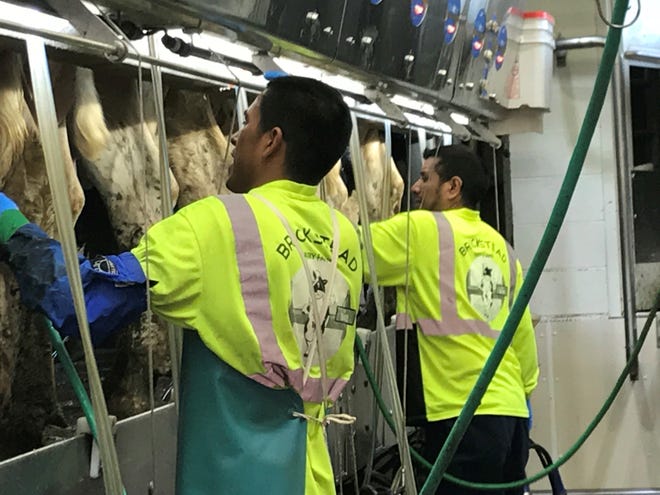Protect your farm's greatest asset - people, by creating a safety and health policy
Every farm business, regardless of size or type needs a safety and health policy. Agriculture remains head and shoulders above other industries in terms of unique safety and occupational health issues, and a thoughtful effort to craft a safety and health policy is an important starting point to protect your most precious asset—people. This applies if you farm alone or with a few family members, or if you are a large dairy or specialty crop operation with dozens of hired employees.
A safety and health policy sets a tone and is foundational to the type of “culture” that helps excellent employers to attract and retain a qualified and committed workforce. A strong, demonstrated, and communicated articulation of workplace safety and health serves as a competitive advantage, especially important in this day and age when it is tough to find and keep good help.
So, what are we talking about? A safety and health policy is best thought of as a short, written document that is clearly written, and easily understood by all who work (and live) on the farm. Ideally, employees are involved in its creation. This ensures ownership by employees and clear understanding. Think of a safety policy as the “Bill of Rights” in the Constitution. It makes clear that all who work on the farm have the right to a safe and healthy workplace. It spells out the expectations of the employer and the workers and sets the stage for open and helpful communication. A more detailed “safety plan” is like the rest of the Constitution. The safety plan has details about each work task, job, procedure, piece of equipment, and other nuts and bolts of the work and how the hazards associated with them are to be handled. A safety plan is also updated and amended as things change, just like the Constitution. But, the policy is a fundamental base that defines the values that make your farm special.

So, what are some key components of a safety policy? Here are a few. This written document should:
- Talk about why safety and health is important to you as an employer.
- Include a statement of the goals and desires for all who work on your farm.
- Make clear that safety is best accomplished by eliminating hazards and finding safe ways to get the work done, rather than trying to work around the “edges” of highly unsafe conditions.
- Establish an open-door policy, allowing anyone to come forward with safety and health concerns while also encouraging people to identify better ways versus simply complaining.
- Outline clear expectations for safety and healthy work practices such as regular use of personal protective equipment.
- Point to additional resources, technical information, and required best practices (usually developed over time as part of a “safety program plan.”)
- Provide a description of the consequences and steps that will be taken with repeated safety violations.
Sometimes farm employers are hesitant to spend time writing up such a document. Here are a few ideas to ease the burden of this task.
Perfection is not required—the true value of a safety policy is found through the conversations that lead to the things you put into writing. If each person has the opportunity to speak to the issues, workers will own the policy. Enforcing it will be easy! Start with an existing policy. Several examples exist, and it is easier to start with an outline and you can simply fill it out with the many details that fit your operation, values, and commitments. An example can be found here: https://uwmadison.box.com/v/SampleAgSafetyPolicyMarch2023
You will want to share your safety policy with your insurer and others who provide legal, financial, and other types of help. Insurance companies are increasingly required that farms develop policies and safety management plans and can be a good source of information and guidance.
All workers have the right to a safe and healthy workplace. Working to improve workplace conditions is an important part of “production,” and the efforts you make will pay dividends through better connections to people who work on your farm because you are demonstrating and communicating that you care!

John Shutske is a Professor and Agricultural Safety & Health Specialist at UW Madison Division of Extension and the Department of Biological Systems Engineering
